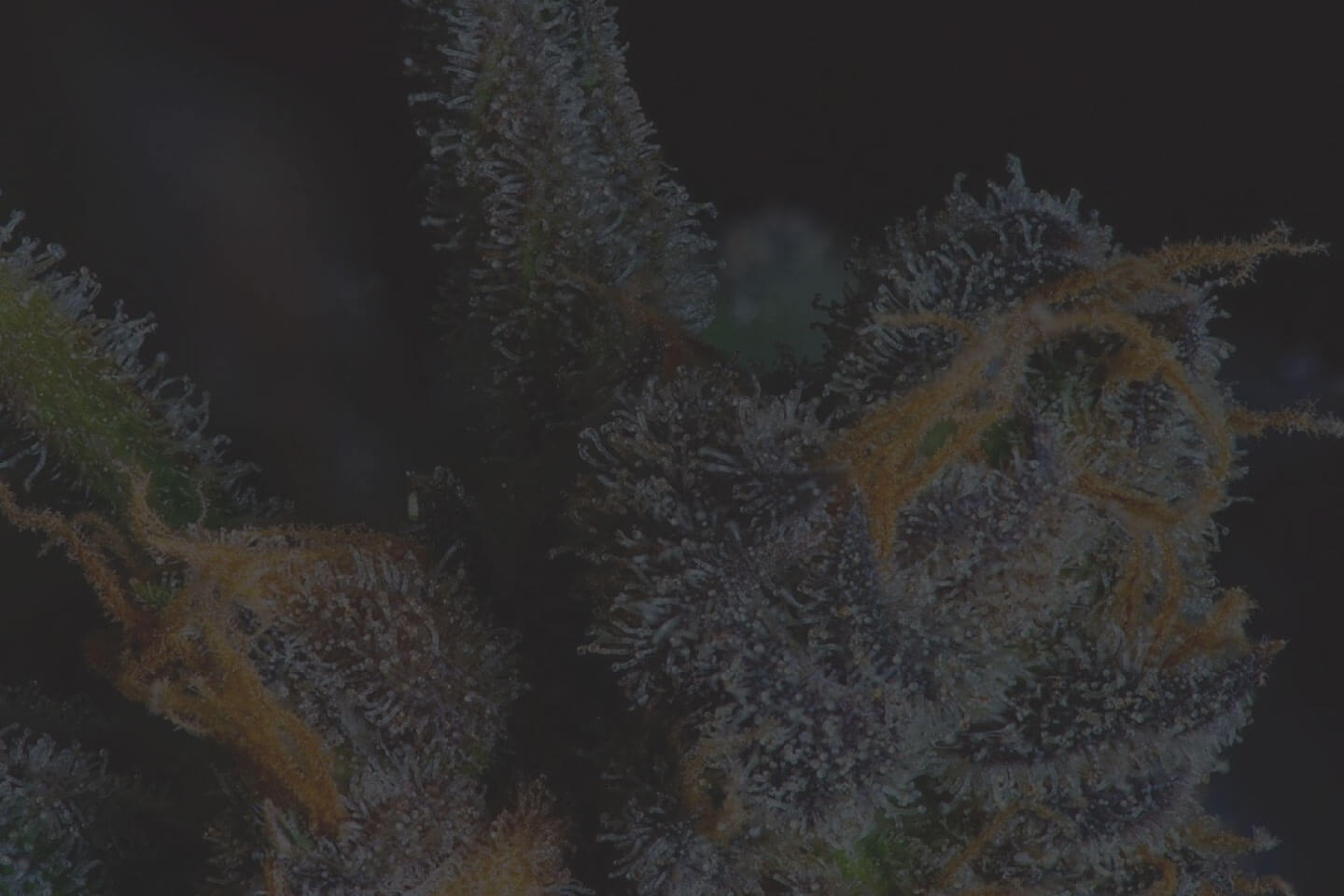As we have learned more about the cannabis plant, different molecules and parts of the plant have been identified. Among the discoveries are a variety of cannabinoids and organic compounds such as terpenes. Every cannabis plant has its own distinct smell, which gives each cultivar its own distinctive character.
Terpenes are responsible for these differences. Our bodies respond differently to different scents, as well as the intensity of certain aromas. There are a wide variety of powerful fragrances in cannabis, much more so than that age-old “skunk smell” stereotype.
These different smells, and the different terpenes that are responsible for them have a profound effect on the cannabis experience.
Modern science continues to develop to allow us to better understand these terpenes as well as harness their distinctive psychoactive properties. By understanding which terpenes are responsible for certain effects, scientists, doctors, and patients can select cannabis products that align with their specific needs.
This article will introduce you to terpenes, discuss the endocannabinoid system and the “entourage effect,” and offer insights into common terpenes and their benefits so that you know what to look for the next time you’re searching for a specific cannabis experience.
What are Terpenes?
Terpenes are the fragrant oils found in plants that determine the character and effects of cultivars. They are found in all living plants, not just cannabis.
Terpenes play an essential role in wine, aromatherapy, and perfume because of the psychoactive effects of certain terpene combinations that stimulate, arouse, or sedate.
Terpenes in nature
In nature, certain terpenes are used as a defense mechanism against herbivores, releasing aromas that suggest a plant may be poisonous or inedible. Similarly, terpenes attract pollinators, such as bees, who may be drawn to the strong aromas of a flower or plant.
The old adage, “The nose knows” is often prescribed as a way to determine which plants or products your body needs. Scents that are pleasurable are those your body is attracted to, while those that are off-putting are likely to offer undesirable effects for your needs.
Terpenes in cannabis
In cannabis, research shows that terpenes interact with cannabinoid receptors and cannabinoids to enhance or mitigate the effects of cannabinoids such as THC and CBD. For years, we’ve relied upon the vague classifications of “broad leaf”, “narrow leaf” and “hybrid” cultivars for certain effects.
As we learn more about the cannabis plant, we are discovering that these specific effects are largely the result of the overall combination, or “entourage,” of terpenes and cannabinoids, along with countless other compounds found in the plant. Specific ratios of cannabinoids and terpenes within a specific cultivar may create distinct effects. Some terpenes like limonene and myrcene can create a relaxing, sleepy, or mellow feeling, while others like pinene and eucalyptol act as bronchodilators or decongestants. Other terpenes like linalool and caryophyllene can counteract the intensity of a high, or “stop” unwanted side effects of cannabis.
Terpenes and trichomes
Terpenes are produced in the trichomes of the cannabis plant, the same glands that produce other cannabinoids such as CBD and THC. There are more than 100 different terpenes in the cannabis plant, and they all contribute to the subtle, unique character of each cannabis strain.
Occasionally, you may hear terpenes be referred to as “terpenoids”. These are very similar, almost identical compounds in the cannabis plant, but terpenoids have been exposed to oxidation, or curing, which changes the chemical composition and dries the terpenes. Think of terpenes as wet essential oils, and terpenoids as their dried, cured counterpart.
How Terpenes Interact with Your Body
Years ago, the common consensus was that THC was solely responsible for the effects of cannabis. We now know that there are hundreds of cannabinoids and terpenes, in addition to a variety of other compounds that interact with your endocannabinoid system (ECS)—a collection of receptors, enzymes and endogenous cannabinoids (endocannabinoids)—to create these effects. Terpenes affect how cannabinoids interact with the ECS.
What is the endocannabinoid system?
The endocannabinoid system, often referred to as the ECS, is the biological system in our bodies that helps regulate homeostasis, or our “general wellness,” including our physiology, mood and everyday experiences.
The ECS is responsible for accepting and producing cannabinoids and is composed of cannabinoid receptors, endocannabinoids, and metabolic enzymes. Terpenes interact with the body’s endocannabinoid system, which also helps regulate:
- Sleep
- Appetite
- Motor control
- Mood
- Immune function
- Reproduction
- Pain
- Pleasure
- Memory
- Temperature
Discovery of the endocannabinoid system
The ECS was discovered in 1992 by Israeli researcher Dr. Ralphael Mechoulam. He discovered two cannabinoid receptors, CB1 and CB2, with the ability to receive and bind with cannabinoids like THC and CBD.
CB1 receptors are concentrated primarily in the brain, though they can also be found in reproductive organs. Conversely, CB2 receptors are usually found in the immune system; the highest concentration of CB2 receptors in the body is in the spleen. CB2 receptors are often believed to be more receptive to CBD.
When molecules like THC and CBD are introduced into the body, they take over receptors that would otherwise be activated by endocannabinoids, endogenous neurotransmitters similar to plant-based cannabinoids that bind to receptors. Additionally, the ECS includes metabolic enzymes like FAAH and MAGL, responsible for breaking down endocannabinoids.
What is the entourage effect?
The entourage effect is the theory that cannabinoids, terpenes and other aspects of the cannabis plant work better when used in conjunction with one another. In other words, neither THC, CBD nor any particular terpene acts alone. Terpenes interact with CBD, THC, and more than 400 trace compounds, creating what’s as the “entourage effect,” and these chemicals interact in a polypharmaceutical capacity.
When terpenes combine with these other elements of the cannabis plant, they may provide the same benefits and serve the purpose of multiple prescribed medications and treatments. Terpenes influence the interactions between THC, CBD, and other cannabinoids to create a distinct, unique cannabis experience. For example, a broad leaf cultivar that is both high in THC and myrcene offers the intoxicating, psychoactive properties of a high-tech variety, while bringing relaxing and sedative effects without anxiety, due to the interaction between the two.
Research has shown that terpenes can offset certain unwanted aspects of cannabinoids like THC, allowing for more therapeutic applications without side effects.
Common Terpenes and Generalized Benefits
Though there are hundreds of terpenes found in cannabis, a handful of them are among the most prevalent. Below you’ll find an overview of some of the most common terpenes you’ll encounter, along with their generalized benefits.
1. Alpha-humulene:
Those familiar with hoppy beers know this terpene all too well.
Alpha-humulene, or humulene, has an earthy, woody, hoppy aroma and is commonly found in beers like IPAs and other hoppy ales. This terpene is also commonly found in household herbs such as ginger, ginseng, and sage.
Alpha-humulene is specifically known for its medicinal benefits, including its antibacterial, anti-inflammatory, and appetite-suppressing properties. High concentrations of alpha-humulene are often accompanied by caryophyllene.
2. Alpha-pinene:
As its name might suggest, you’re likely to smell alpha-pinene around forests and trees, specifically pine, juniper, and conifer trees. Pinene is also found in eucalyptus, frankincense, rosemary and sage bushes.
Cannabis cultivars that have high concentrations of pinene give off a piney aroma that stimulates, alerts, and energizes. This terpene is a bronchodilator that offers anti-inflammatory and antiseptic benefits.
Pinene is also believed to help counteract some of the effects that THC can have on short-term memory.
3. Beta-caryophyllene:
If cannabis has ever smelled “peppery,” beta-caryophyllene is likely the cause. Caryophyllene is commonly found in black pepper, cloves, hops, and rosemary.
This terpene is responsible for the peppery, clove-like spiciness that certain cultivars exude. Research has shown that this terpene in particulate directly activates CB2 cannabinoid receptors and acts as a non-psychoactive agonist for our bodies’ endocannabinoid systems.
Due to the prevalence of CB2 receptors in the immune system, this terpene has been shown to help alleviate pain and reduce the impact of chronic inflammation. Caryophyllene is also known to possess antioxidant and anti-inflammatory properties.
4. Eucalyptol:
As the name might suggest, eucalyptol is most commonly recognized as the scent of eucalyptus plants and is responsible for the minty, sweet, and slightly spicy smell of certain cannabis cultivars.
This terpene can be found in tea trees, cardamom, rosemary, sage, and bay leaves, along with mouthwashes, cough suppressants, and body powders, due to the aromatherapy applications that it possesses.
Eucalyptol is an anti-inflammatory, antioxidant, decongestant that provides relief for those with asthma, COPD, and muscle and joint pain.
5. Geraniol:
Geraniol provides a flowery scent, and may remind you of rose-scented perfume. That’s because geraniol can be found in rose oil, perfumes, and fruit flavoring, among other common cosmetic and household products.
This terpene offers insecticide and insect repellent properties, making it a natural pest control agent, and has been suggested for use as a chemoprevention agent for cancer. Geraniol possesses antimicrobial, antibacterial, anti-inflammatory, and antifungal properties.
6. Limonene:
You may notice that the word limonene resembles lime, lemon, and limon (the Spanish word for lemon). As the similarity of its name implies, this terpene is responsible for giving cannabis a zesty, citrusy scent, reminiscent of lemons and limes.
Limonene is commonly found in fruit rinds like lemon peels as well as cosmetics and cleaning products, including aftershaves, perfumes, and bath products. Cannabis cultivars with this strain are likely to help with the treatment of anxiety, depression, inflammation, pain, and can help elevate mood and relieve stress.
7. Myrcene:
Mangos are loaded with myrcene, a powerful terpene with an earthy, herbal aroma that is known for its sedative effects. Many of us have consumed myrcene in a variety of foods and beverages.
Myrcene is found in bay leaves, wild thyme, parsley, and cardamom. Cannabis cultivars that are high in myrcene are an excellent choice for sedation and pain relief. Some suggest that high concentrations of myrcene synergistically interact with THC and allow cannabinoids to more easily cross the blood-brain barrier, which may explain why we notice an increase in the effects of THC and other cannabinoids in the presence of myrcene.
This terpene also possesses antioxidant, anti-inflammatory, and anti-carcinogenic properties.
8. Ocimene:
While often underappreciated, ocimene is responsible for certain cultivars’ sweet, herbaceous aromas, with citrusy, woodsy undertones.
Cannabis cultivars that have above-average concentrations of ocimene may have fruity or sweet smells. Ocimene can be found in tropical fruits like mangoes, kumquats, lavender, orchids, and even hops. This terpene is often used in the perfume industry for its floral aroma, and is believed to be part of a plant’s natural defense against pests, mosquitoes, and other threats.
Studies have shown that ocimene is an effective anti-inflammatory while also possessing antiviral and antifungal properties.
9. Terpinolene:
Terpinolene is present in many cannabis cultivars in small amounts. Like alpha-pinene, terpinolene has a piney scent, with floral qualities.
This terpene is commonly found in nutmeg, tea trees, conifers, apples, cumin and lilacs, as well as turpentine, perfumes, and flavorings.
Terpinolene is also believed to have antioxidant, antibacterial and sedative properties.
Conclusion:
The different aromas of cannabis cultivars present more than differences in personal preferences. They are indicative of additional medicinal and therapeutic benefits that specific cannabis plants can offer, due to the varying concentrations of terpenes. These oils interact with other cannabinoids and components of the cannabis plant, and can be methodically combined to create one-of-a-kind cultivars and specific entourage effects. These entourage effects make for increasingly complex interactions in cannabis, and advancements in science empower us to produce increasingly precise cannabis products.
To learn more about terpenes and the various components of the cannabis plant, we invite you to join the Happy Valley newsletter and stop by one of our locations for a consultation with our knowledgeable Hosts who can help guide your cannabis experience.







